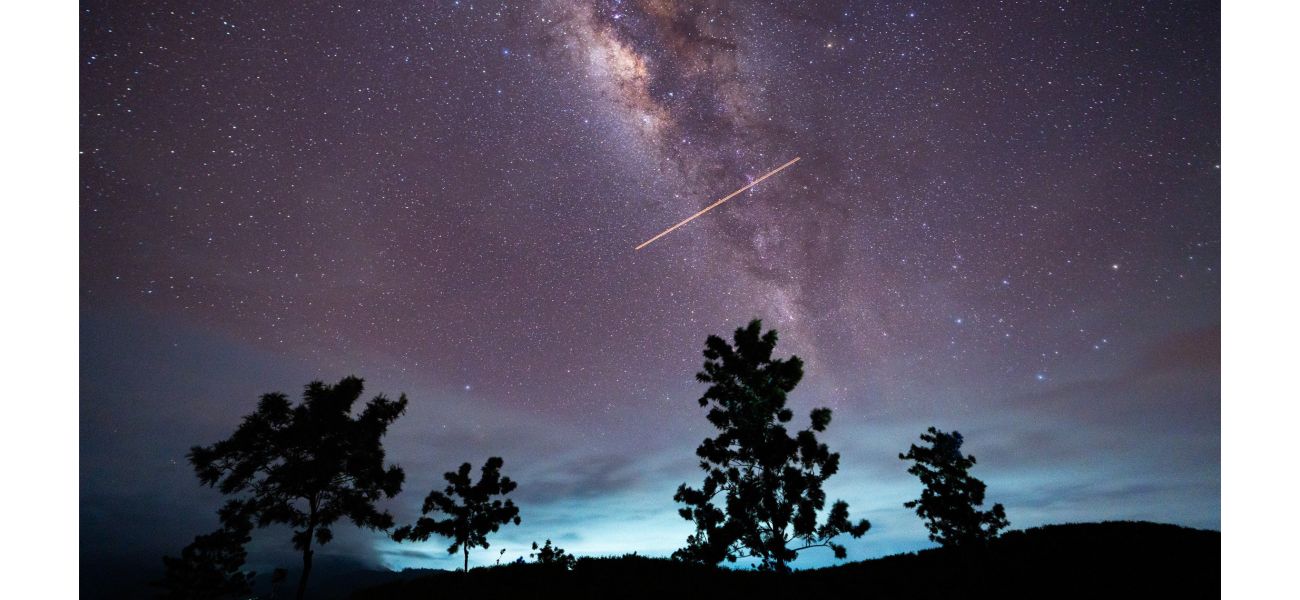When and where can you view meteor showers in the night sky?
This month, there are three individuals.
October 5th 2024.

October is known for its stunning meteor showers, and this year is no exception. Some of the most active and visually impressive meteor showers occur in this month. These showers are caused by comets passing by the Earth and leaving behind a trail of debris that lights up the night sky.
One such comet is Halley's Comet, which can only be seen every 75 years. The meteor system associated with this comet, known as the Orionids, is visible to the naked eye and will put on a show this month. Although we won't see Halley's Comet again until 2061, we can still enjoy the Orionids meteor shower this year. And it's not the only shower happening in October.
In fact, there are three meteor showers scheduled for this month. These showers occur when space debris enters the Earth's atmosphere and burns up about 62 miles above the ground. So, when can we catch a glimpse of these dazzling displays?
The first shower, the Draconids, will be visible from October 6 to 10. These shooting stars are caused by tiny particles from the comet 21 P/Giacobini-Zinner and can be seen in the Northern Hemisphere after nightfall. The peak of this shower will be on October 8 and 9, so make sure to keep your eyes on the sky during those days.
Next up is the Southern Taurid meteor shower, which is expected to peak on October 10 and 11. These meteors are known for their slow but bright movement and can be seen at a rate of five an hour. Unlike the Draconids, this shower has been ongoing since September 10 and will continue until November 20.
But the most exciting shower of all is the Orionids, with its peak landing on October 21 and 22. These swift-moving meteors leave a fine trail in their wake and can be seen at a rate of 25 an hour. However, they have actually been visible since the beginning of October, so keep your eyes peeled for these spectacular shooting stars.
If you're wondering where the best spot is to catch these meteor showers, the answer is simple: anywhere with little to no light pollution. Darkness is your friend when it comes to stargazing. The Royal Observatory Greenwich suggests bringing a comfortable chair and dressing warmly, as you may be outside for a while.
A clear view of the stars is essential, so try to find a spot with minimal light pollution. While you may have better luck on a mountain like Ben Nevis, there are plenty of spots in between that can offer a decent view. Just make sure to check the weather forecast beforehand, as cloudy skies can ruin the experience.
And if you're thinking of using binoculars or a telescope, think again. The best way to fully appreciate these meteor showers is with the naked eye. Take in the whole sky and let yourself be mesmerized by the beauty of these shooting stars. So, mark your calendars and don't miss these incredible displays in the night sky.
One such comet is Halley's Comet, which can only be seen every 75 years. The meteor system associated with this comet, known as the Orionids, is visible to the naked eye and will put on a show this month. Although we won't see Halley's Comet again until 2061, we can still enjoy the Orionids meteor shower this year. And it's not the only shower happening in October.
In fact, there are three meteor showers scheduled for this month. These showers occur when space debris enters the Earth's atmosphere and burns up about 62 miles above the ground. So, when can we catch a glimpse of these dazzling displays?
The first shower, the Draconids, will be visible from October 6 to 10. These shooting stars are caused by tiny particles from the comet 21 P/Giacobini-Zinner and can be seen in the Northern Hemisphere after nightfall. The peak of this shower will be on October 8 and 9, so make sure to keep your eyes on the sky during those days.
Next up is the Southern Taurid meteor shower, which is expected to peak on October 10 and 11. These meteors are known for their slow but bright movement and can be seen at a rate of five an hour. Unlike the Draconids, this shower has been ongoing since September 10 and will continue until November 20.
But the most exciting shower of all is the Orionids, with its peak landing on October 21 and 22. These swift-moving meteors leave a fine trail in their wake and can be seen at a rate of 25 an hour. However, they have actually been visible since the beginning of October, so keep your eyes peeled for these spectacular shooting stars.
If you're wondering where the best spot is to catch these meteor showers, the answer is simple: anywhere with little to no light pollution. Darkness is your friend when it comes to stargazing. The Royal Observatory Greenwich suggests bringing a comfortable chair and dressing warmly, as you may be outside for a while.
A clear view of the stars is essential, so try to find a spot with minimal light pollution. While you may have better luck on a mountain like Ben Nevis, there are plenty of spots in between that can offer a decent view. Just make sure to check the weather forecast beforehand, as cloudy skies can ruin the experience.
And if you're thinking of using binoculars or a telescope, think again. The best way to fully appreciate these meteor showers is with the naked eye. Take in the whole sky and let yourself be mesmerized by the beauty of these shooting stars. So, mark your calendars and don't miss these incredible displays in the night sky.
[This article has been trending online recently and has been generated with AI. Your feed is customized.]
[Generative AI is experimental.]
0
0
Submit Comment





